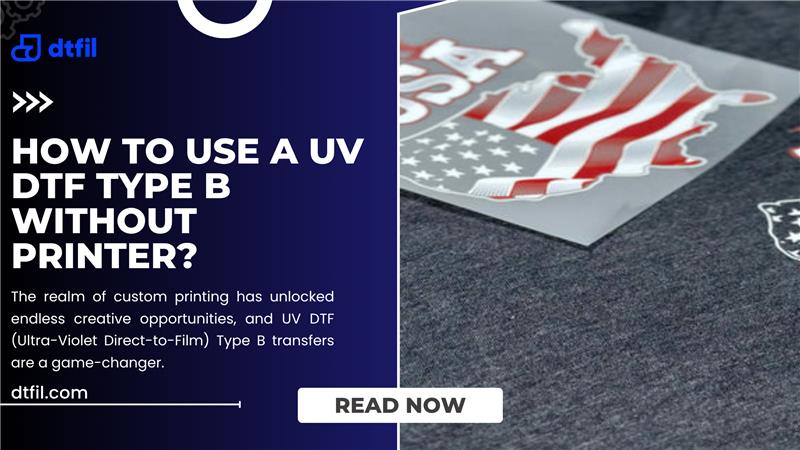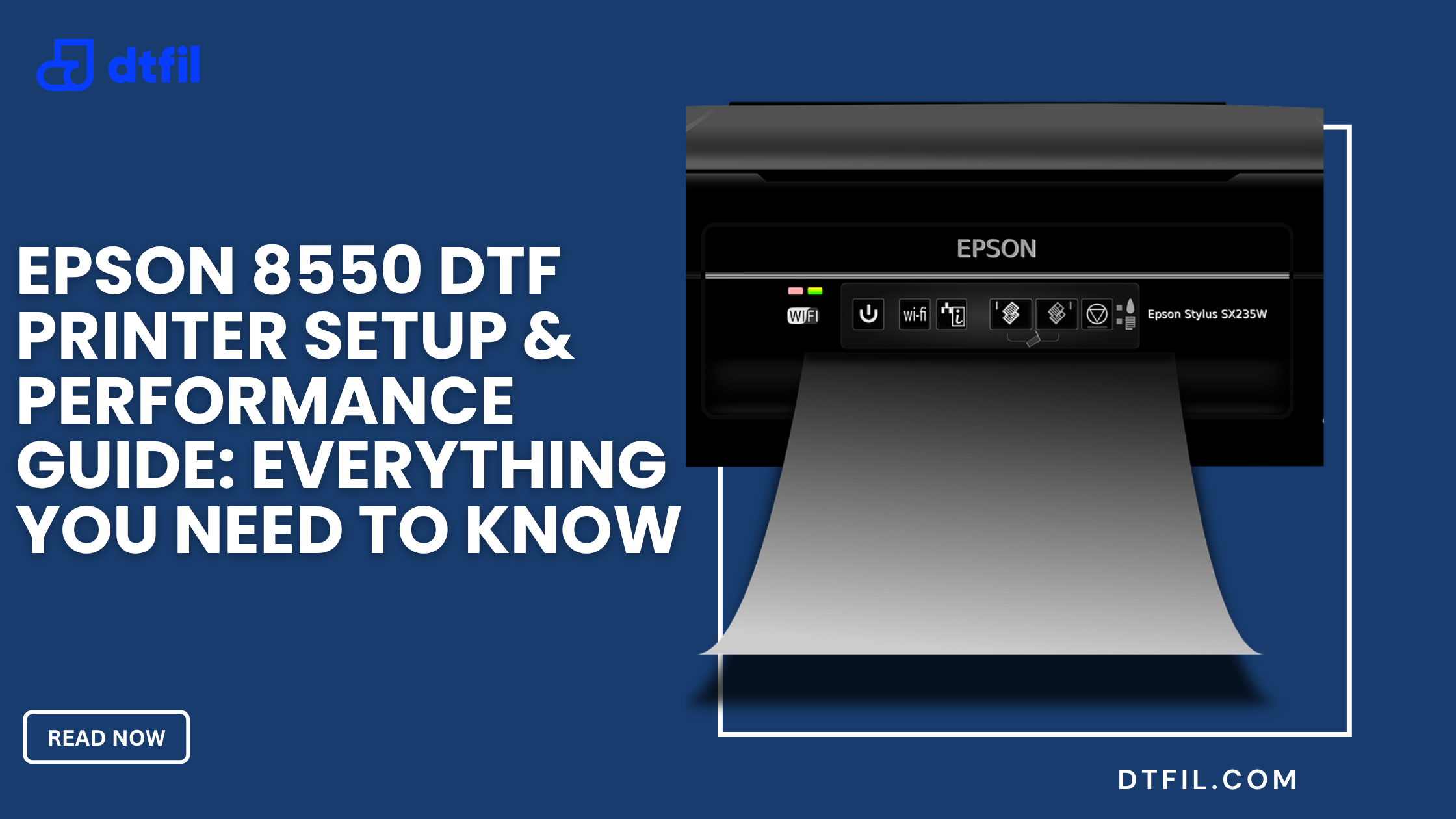You’ve generally noticed the rising attention around DTF printing with its vibrant colors, intricate details, and capacity to work on a wide range of fabrics. But behind every high-quality transfer is a quiet essential: DTF powder. It may not take the spotlight, but in the printing process, its role is indispensable.
So, what is DTF powder and why is everyone talking about it? From beginners testing their first press to pros chasing that perfect finish, the right DTF transfer powder is key. But not all powders are created equal—there are various types, particular benefits, and a right method when it comes to how to use DTF powder effectively.
So, if you're on a mission to level up your prints and want the inside scoop on finding the best DTF powder, you’re in the right place. Let’s dive into real tips that’ll help you stick to high-quality results.
What is DTF Powder?
DTF powder is one of the additives used during the DTF process, which helps in the binding of the designs to the fabric being printed on. The process starts by applying ink to DTF film with the addition of powder while the ink is still wet.
The design is finally attached to the garment after heating the powder, which causes it to melt. DTF adhesive powder is usually produced from a blend of finely ground polymers and resins, along with a few other selective materials.
They help in achieving a smoother powder print by providing a distinct finish, thus aiding the design’s longevity. For best quality, using high quality DTF powder makes a difference in durability and detail of DTF prints.
Benefits of Using DTF Powder
Wondering what is DTF powder really doing in your DTF printing setup? It’s the behind-the-scenes hero that ensures your designs stay vibrant, durable, and fabric-ready. Below are the benefits you cannot overlook.
-
Strong Adhesion: Applying the powder to the DTF film creates a lasting connection between the ink and the fabric, which is ideal for tough, crack-resistant designs.
-
Versatile with Other Materials: Works well with DTF Powder and Paper, DTF Sheets and Powder, and even DTF Transfer Paper and Powder, thus providing improved flexibility with printing materials.
-
Compatible with All Fabrics: Unlike traditional sublimation, the sublimation DTF hack allows you to print on cotton, blends, polyester, and more—no fabric is left behind.
-
Smooth Printing: Mix it with a DTF Powder Shaker to increase efficiency, reduce clean-up, and keep production running smoothly.
-
Budget-friendly: Regardless if you are using DTF film and powder or DTF transfer paper and powder, this technique minimizes material waste and maximizes productivity.
What are The Different Types of DTF Powder?

There are several major DTF powder types and uses, each designed for specific fabrics. The right choice is not a matter of preference but a means of achieving a desired output.
1. TPU (Thermoplastic Polyurethane) – This one is ideal for stretchable garments like sportswear and activewear. TPU DTF powder provides comfort and flexibility, so it’s a good option when your design has to move with the fabric.
2. Polyester PES – Are you printing on polyester? PES power will serve you best. It has strong bonding and enhances vibrant color printing. If you are aiming at sharp results using DTF paper and powder, this is one of the best DTF powders for high-quality transfers.
3. Polyamide PA – Do you have nylon bags or accessories? PA powder is ideal for such. It has excellent adhesion and durability, particularly with DTF film and powder, or even DTF transfer powder for more abrasive materials.
Choosing the right DTF powder depends on what your substrate is. It doesn’t matter whether you are using DTF transfer powder with film or doing powder printing with DTF paper and powder; one thing to consider is that having matching powder and material will make a difference.
Also Read: Is DTF the Same as Sublimation? What You Need to Know
How to Use DTF Powder for Better Transfer Adhesion?
Ready to get pro-level prints? Here’s how to nail the DTF powder application process from start to finish:
Step 1: Print Your Design
Begin by loading your design into your DTF printer and print it onto the DTF film using the correct DTF ink. Pay attention that the design remains crisp and the ink is still wet, this is key for powder adhesion.
Step 2: Apply the DTF Powder
Now comes the fun part. Gently sprinkle DTF powder over the printed film. Make sure all the wet ink areas are fully coated. Shake off any excess—don’t overdo it, or you’ll end up with clumps instead of clean prints. This is the core of how to use DTF powder correctly.
Step 3: Cure the Powder
Using a curing oven, heat gun, or a DTF hack sublimation method like a heat press hover, melt the DTF powder until it looks glossy—not burned. This bonds the powder to the ink without melting the film.
Step 4: Press the Design
Next, set your heat press settings for DTF powder. The setting should be around 300-315°F for 10-13 seconds at medium pressure.
Step 5: Let It Cool & Peel
Wait for the film to cool completely. Then, gently peel it off to reveal a bold, durable transfer.
How to Store DTF Powder Properly?

You’ve invested in the best DTF powder—great choice! But even the highest quality stuff won’t perform well if it’s not stored properly.
Here’s how to keep your powder in peak condition:
-
Keep it Dry – Moisture is the silent killer. Properly store your DTF powder in an airtight container.
-
Cool & Dark – Store it in a dry and cool place away from sunlight or heat sources. Sunlight and high temps can mess with the powder’s consistency and affect adhesion during powder printing.
-
Avoid Cross-Contamination – Mixing old and new batches of DTF transfer powder? Not a great idea. Different batches can behave differently, and mixing them might lead to uneven results on your DTF film and powder.
Conclusion
It's true that the DTF powder printing technique has made a significant change in the world of printing as it enables the creation of quality prints with ease on different materials. The practicality of DTF powder in custom printing lies in its ability to create long lasting images as well as its expansion in usability.
At DTFIL, we are here to change from a vision to fill the gap in the printing industry, We saw more than problems—we saw potential. Potential to improve Direct-To-Film printing with unmatched quality, precision, and a customer-first approach.
Visit us where innovation meets reliability. Let’s print something extraordinary together.
FAQs
Q: What is DTF Powder Made From?
Yes, you absolutely need DTF powder for the transfer to work. The ink won’t stick to the fabric as it’s a non-negotiable step in the DTF process.
Q: Can You Use DTF Powder on Sublimation Paper?
You can experiment, but DTF powder isn’t designed for sublimation paper—results may be inconsistent compared to traditional DTF film and powder.
Q: Is DTF Powder Toxic?
No, DTF powder is generally non-toxic and safe to handle, though it’s best to use it in a well-ventilated area and avoid inhaling fine particles.
Q: What is the Difference Between Black and White DTF Powder?
Black DTF powder is used on dark or black garments to prevent shine, while white DTF powder is more versatile and works well on most fabric colors.
Q: Do you have to use powder for DTF transfers?
Yes, you absolutely need DTF powder for the transfer to work. The ink won’t stick to the fabric as it’s a non-negotiable step in the DTF process.
Q: Is there a substitute for DTF powder?
Currently, there’s no true substitute for DTF powder. Alternatives like glue or heat adhesives don’t offer the same bond or finish on fabric.
Q: Is DTF better than sublimation?
In many ways, yes. DTF works on cotton and dark fabrics, unlike sublimation, which needs polyester and light colors. It’s more versatile for apparel.
Q: How do I make my own DTF transfers?
Print on DTF film, coat with DTF powder, cure it, then press onto fabric. That’s the basic DIY way to make DTF transfers at home!
Read more related blogs: How to Use DTF Powder: Enhancing Your Prints Like a Pro
How to Use DTF Powder: Enhancing Your Prints Like a Pro








